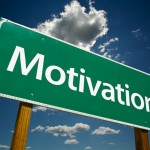GO GREEN AND GET FIT! This article is sponsored by AC4 Fitness. AC4Fitness is a neighborhood style health club specializing in strength training and cardio-equipment along with 24/7 access for members. That’s right, as an AC4 Fitness member you receive your own key allowing you to workout at any time that is best for you! And as featured in the LA Times, AC4 Fitness is a showcase for cardio-equipment that produces rather than uses electrical energy. Every time you exercise on an Elliptical your human power is fed into the electrical grid. Taking care of the environment while taking care of yourself just seems like a smart thing to do. And as a membership option you may also enjoy HydroMassage, Tanning, and Wi-Fi—all in a non-competitive, and clean environment with No Sales People. If you’re looking for an alternative health club that is: Simple – Affordable – Comfortable – Convenient – AND A LITTLE GREEN, give AC4 Fitness a look.You won’t be disappointed. Check out our modest membership fees and “paperless” enrollment process at www.AC4Fitness.com or visit us at 52 N Fairview Ave., Goleta, CA.
Stick to it in 2013!
Written by Brett Klika C.S.C.S.
Good resolutions are simply checks that people draw on a bank where they have no account. ~Oscar Wilde
Ahh, The NewYear’s resolution. It’s often a little white lie we tell ourselves to paint a picture of hope, change, and a flat stomach for the year to come. It’s not that we’re dishonest. It’s not that we don’t really WANT change, we just don’t know how to stick to a program.
The above dilemma is why more than 50% of people who begin a workout plan in the New Year find their way back to the couch within six months. The notion of “working out every day” looks good on paper in December but as the reality of time, energy, and motivation set in, the idea loses its sizzle by summer.
Do you find yourself in this same predicament year after year with diet and exercise? If so, let’s make a change in 2013.
Here are 5 tips to help you stick to your program in 2013.
Instead of just writing your resolution, write why you are making that resolution.
If there is a strong enough “why” we can make anything happen. If there was a $100 in the middle of a busy freeway, would you run out to get it? Probably not. What if a loved one was trapped in the middle of that freeway? It would probably change your motivation. Your “why” for behavior got stronger!
If exercise is your plan, why? What will exercise do for you physically, mentally, and emotionally? What are the ramifications if you don’t succeed?
Find activities you enjoy.
Regardless of what the media marketing machine tells you, there is no “one” best way for everyone to exercise. Odds are, there are activities you enjoy doing more than others. Do activities you enjoy (or dread less) and do them frequently. Don’t set yourself up for failure by resolving to do something you hate doing.
Get an “accountabilabuddy.”
Research has shown that you are more than twice as likely to exercise if you do the program with someone else. Why? Accountability! It’s a lot harder to sleep through that alarm when you know a friend is waiting for you at the gym.
If you’re having a tough time finding a friend to commit, a personal trainer is a probably the most effective option there is for building accountability and expertise into a program.
Set realistic and specific goals.
Goals are easy to write. They are much more difficult to fulfill. Instead of saying you want to “lose 60 pounds by not eating any junk food and exercising every day”, you may want to be more specific and realistic. While 60 pounds may be your big goal, you can start with 10. If you currently don’t exercise at all, aim for 2 days per week and 30 minute workouts. If your diet is poor, make some subtle adjustments like “no sugary drinks Monday through Friday.”
These goals are more attainable and will deliver you increments of success. You can always build on them!
Exercise at the same time every day.
If you wait to “find the time” to exercise, it’s not going to happen. You need to make the time and build in a portion of your day reserved for exercise. For most people, first thing in the morning is the time of day they can control. Even those who claim to “not be morning people” eventually come to enjoy the uninterrupted solace of morning.
If it’s not the morning, create a time such as your lunch break, or on the way home from work, where you can commit to getting fit!
Exercise these tips as you’re committing to health and fitness in 2013!
This article is written by Brett Klika. Brett Klika C.S.C.S., author of “The Underground Workout Manual- Exercise and Fat Loss in the Real World” (www.undergroundworkoutmanual.com) is a world renowned human performance specialist, motivational speaker, author, and educator. In his 15 year career, Brett has accrued more than 20,000 hours of training with youth, athletes, executives, and everyday people. He uses this knowledge and experience to motivate individuals and audiences around the world through his writing, speaking, DVD’s, and free blog. To try the Underground Workout Manual for FREE and check out his blog, visit www.brettklika.com.
 Subscribe
Subscribe


